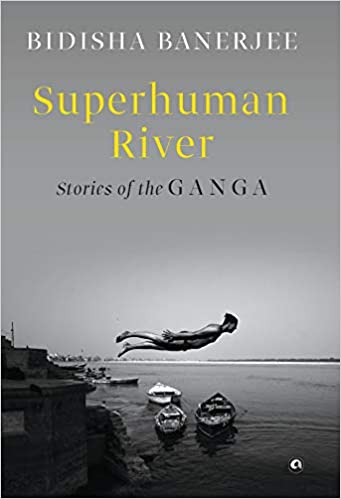SUPERHUMAN RIVER: STORIES OF THE GANGA
no information available
Worshipped as a living goddess for centuries, the Ganga is one of the most important rivers in the world. From its icy Himalayan origins, the river winds its way eastward for 2,525 kilometres through five major Indian states before spilling across the Bangladesh border at the Bay of Bengal, creating the largest mangrove system on earth—the many-mouthed Sundarbans delta. Five hundred million people are sustained along its banks or eke out a living by tilling land that the river fertilizes. Its waters have spawned hundreds of towns and cities, foremost amongst them Varanasi, or Kashi, the city favoured by Lord Shiva himself—one of the oldest continuously inhabited cities in the world. The Ganga is the living threshold between the human and the superhuman, mythically originating in the Milky Way and extending to the underworld. Described in legend as the sacred river that yields gold, it is one of the most polluted rivers in today’s world. More than a billion litres of waste flow into the river every day. The Ganga River dolphin, once present in abundance, is severely endangered and nearly impossible to sight. In 2014, the Modi government launched their flagship programme, Namami Gange, to rejuvenate the holy river with a staggering budget of Rs. 20,000 crores. More than five years after Modi promised an ‘aviral, nirmal Ganga’, the river remains highly polluted and the ground realities show little or no progress. Will the Ganga ever be clean? For ten years, Bidisha Banerjee explored the Ganga from its source to the sea. The result is Superhuman River, a compelling and fresh perspective on every aspect of this extraordinary river. ... Read more Read less











